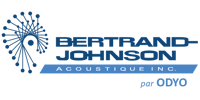HEARING SCREENINGS
Prioritize actions
Following the results of hearing screenings

By Jules Pouzot | Operations Manager
The administrative reports obtained following audiometric examinations provide a valuable opportunity to guide the actions to be taken as part of a hearing loss prevention program. These results should not be limited to simple monitoring, but should be used strategically to reinforce the program and effectively prevent hearing loss in your company.
Use results to plan targeted actions
When hearing screening results show the potential presence of hearing loss caused by noise exposure, occupational health and safety managers need to plan and prioritize the following actions:
-
Trend analysis
-
Action: Compile audiometric data to identify trends, such as deteriorating hearing in specific groups or areas of the company.
-
Corrective action: If worrying trends emerge, focus efforts on these groups or sectors by increasing training, noise control measures or the distribution of suitable hearing protectors.
-
-
Identify risk areas
-
Action: Identify work areas where hearing loss is more frequent, by comparing audiometric test results with measured noise levels.
-
Corrective action: Reinforce actions in these areas, such as installing acoustic barriers, overhauling noisy equipment or reducing exposure times.
-
-
Early intervention
-
Action: Take immediate action when even minimal hearing loss is detected. Consider individual follow-up for affected workers.
-
Corrective action: Adjust the type or level of hearing protection offered to these workers, and review their training on the proper use of protectors.
-
-
Evaluation of intervention effectiveness
-
Action: Compare audiometric data from previous years with current results to assess whether the measures implemented have had a positive impact.
-
Corrective action: If results show little or no improvement, revisit prevention measures and consult noise risk management experts if necessary.
-
Action beyond screening
Audiometric test results are an essential tool for monitoring and evaluating the effectiveness of a hearing loss prevention program. A well-organized database enables both individual and collective progress to be measured, and areas or groups requiring targeted intervention to be identified.
There are, however, certain limitations to this approach. The time required to confirm observed trends, as well as the use of appropriate statistical tools to correctly interpret long-term data, represent major challenges.
To continuously reinforce the program's effectiveness and overcome these limitations, it is essential to implement proactive strategies, including :
-
Training and awareness-raising
Reinforce awareness-raising sessions on the dangers of noise and the importance of wearing hearing protectors, tailoring them to the most exposed workers. -
Updating equipment
Identify the machines or tools responsible for high noise levels in problem areas, and plan their replacement or maintenance to reduce noise at source. -
Reinforcing individual monitoring
Offer personalized follow-up to workers whose audiometric tests show signs of deterioration. This may include a medical assessment or specific recommendations to better protect their hearing. -
Documentation and communication
Document all actions taken in response to audiometric results and communicate them to the workers concerned and to the organization as a whole. Greater transparency helps to ensure that employees adhere to preventive measures.
In conclusion, the strategic use of audiometric results, combined with proactive measures, considerably improves the effectiveness of the hearing loss prevention program. This approach not only helps prevent hearing loss, but also ensures a safer working environment for all.

Measure the impact of noise on your workers' hearing health
Reinforce your hearing loss prevention program with our on-site hearing screening services at your company or at one of our partner audiology clinics.

-1.png?width=144&height=72&name=BJA%20_%20Logo%20Color%20%20(1)-1.png)
